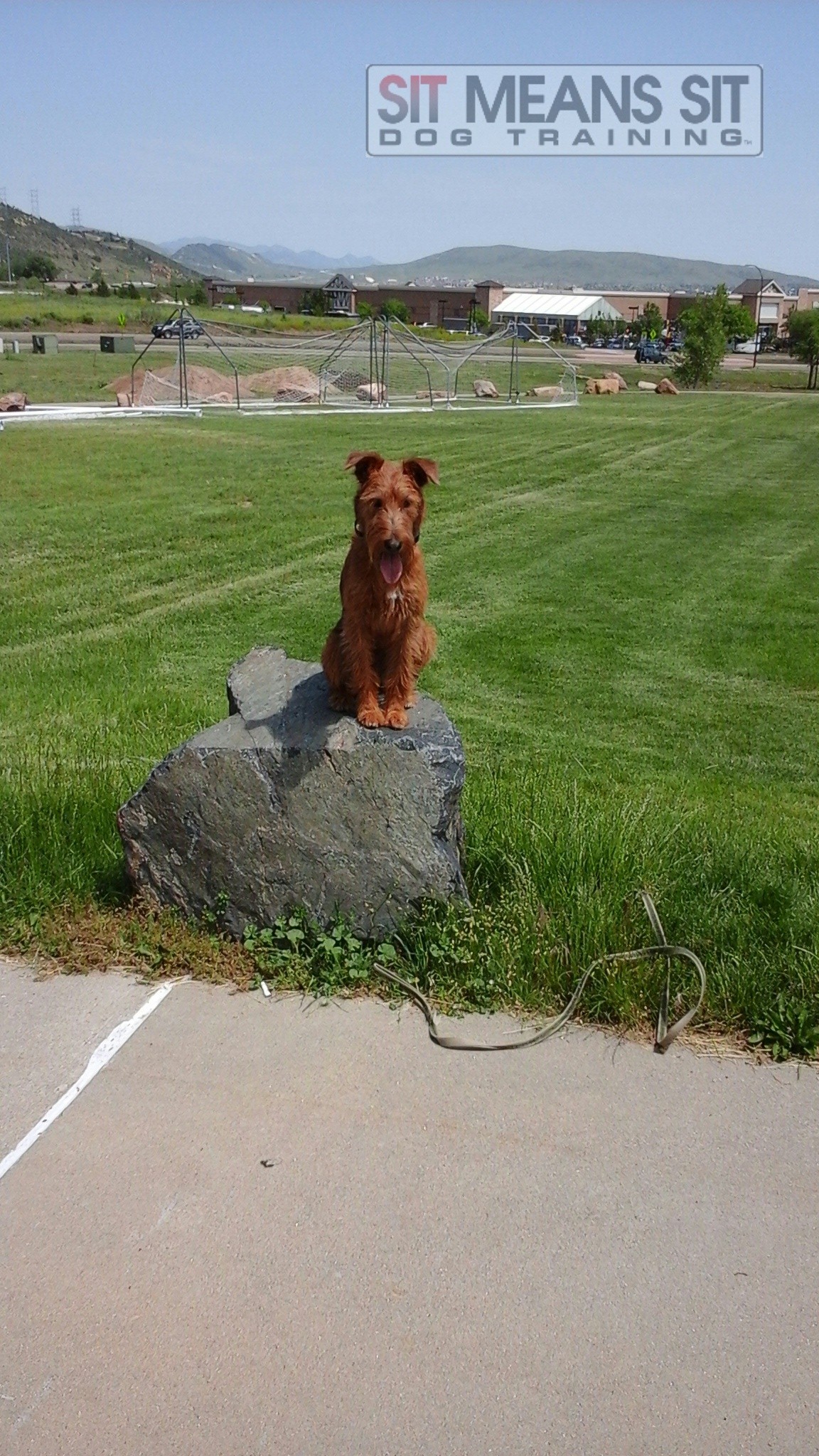
Understanding the Release Dog Command
 At Sit Means Sit South Denver we have the pleasure of working with all ages and breeds of dogs each and every day. While no two animals are alike, we use many of the same fundamental dog training commands with each of the dogs we train. In today’s training corner we are going to discuss the release command, a command that plays an integral role in the Sit Means Sit methodology. If you are just getting started check out our article on getting off on the right foot with your puppy.
At Sit Means Sit South Denver we have the pleasure of working with all ages and breeds of dogs each and every day. While no two animals are alike, we use many of the same fundamental dog training commands with each of the dogs we train. In today’s training corner we are going to discuss the release command, a command that plays an integral role in the Sit Means Sit methodology. If you are just getting started check out our article on getting off on the right foot with your puppy.
A “release” command can be communicated via a sound, a word or a physical signal. The release lets the dog know that a reward is forthcoming. In the beginning of our dog training program they will not necessarily comprehend why they are being rewarded. However over time, the consistency of the release/reward model will help them to understand which behavior is in fact leading to the reward.
Dog Training Denver: Selecting a Release Command
It’s important to select a release command that will be effective in virtually all environments. You do not, for example, want to select a release command like “okay” that your dog is likely to hear frequently in everyday conversation. At Sit Means Sit South Denver, we typically use the command “break” or “yes” to as our release. These commands are used to signify a reward but they do not release the dog from training. We use another command such as “free” when releasing the dog from training to help them understand that they are free to play.
Teaching the Release Command
To help the dog understand the significance of our release command we begin by “loading the release.” This is the practice of rewarding quickly and frequently before the dog even understands the action being rewarded.
An example of this would be teaching a dog the “place” command. In order to do this I will guide the dog to a specific spot, once there I reward the behavior with the release command and an immediate treat. I then call the dog away from the place and guide them back right away, repeating the release/reward procedure multiple times in a row. This repetition helps the dog understand the desired behavior.
Next I deliver the release command and have the dog come retrieve a treat from my hand. I then lure him back to the place. After several attempts the dog will voluntarily return to the spot without being asked. I allow him to do this and continue to increase the distance between us before giving the release command. The end result is the dog running to his place and waiting for the release command. The release command is the core of our dog training methodology at Sit Means Sit South Denver. If you’re teaching your dog a release command at home, we encourage you to consider these tips:
Dog Training Denver: Tips to Keep In Mind
Consistency – when you begin to train your dog, make sure the release command is coming from same person and the treat is coming from the same hand every time. Once the behavior is ingrained, other members of the family can also work with the dog.
Intermittent Rewards – it is your goal over time to encourage the release behavior even when a reward is not available. To do this, be sure and vary the breaks between rewards and only offer treats when the desired behavior is exhibited.
Timelines – in order to clearly communicate that you are pleased with the behavior, reward the dog right away. Do not allow time to pass as this can cause confusion.
Sit Means Sit: the Leader in Dog Training Denver
Are you interested in learning more about our award winning Denver dog training services? We encourage you to contact us today! Learn why we are the go to source for dog training throughout Denver. Want more training tips? Follow us on Facebook, Twitter and Google+ and keep up with our blog!
